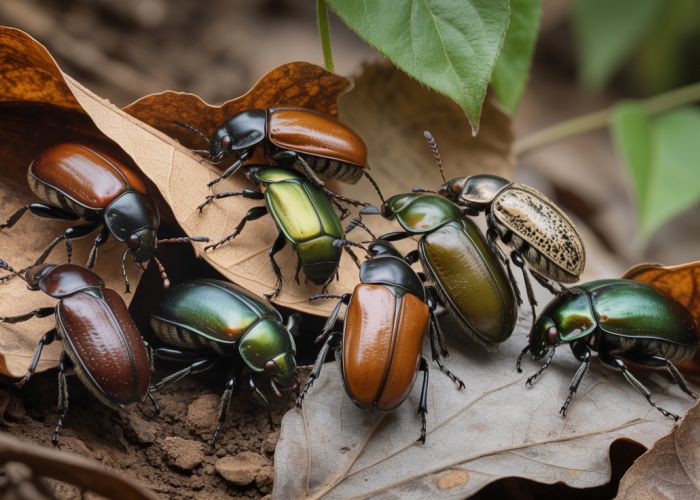Charles Darwin’s theory of evolution underscores the importance of adaptation, a process fueled by variation natural selection. Genetic mutations introduce novel traits into populations, impacting their susceptibility to environmental pressures. The Galapagos Islands, a natural laboratory, famously illustrate the power of these evolutionary forces. Understanding how these entities interact is crucial for grasping the core principles underpinning variation natural selection and its transformative role in shaping biodiversity.

Unlocking Variation: Structuring an Article on Natural Selection’s Secret Sauce
To effectively explain how variation fuels natural selection, an article structure focusing on clarifying the "variation natural selection" relationship is paramount. This structure will prioritize accessibility and logical flow, breaking down potentially complex concepts into digestible segments.
Defining Key Terms
Before delving into the interplay, clear definitions are crucial.
-
Variation: Explain this as the differences within a population. Emphasize that these differences are heritable (passed down through genes). Give real-world examples, such as differences in beak size in birds or color patterns in butterflies.
-
Natural Selection: Describe this as the process where organisms with traits better suited to their environment tend to survive and reproduce at a higher rate than others. Highlight that natural selection acts on existing variation.
The Source of Variation: Mutation and Genetic Recombination
This section explores where variation originates.
Mutation: The Random Engine of Change
- Explain that mutations are changes in the DNA sequence.
- Emphasize that mutations are random and can be beneficial, harmful, or neutral.
- Give examples of how a single mutation can lead to a change in a trait.
Genetic Recombination: Shuffling the Deck
- Describe how genetic recombination occurs during sexual reproduction (meiosis).
- Explain the processes of crossing over and independent assortment, demonstrating how these shuffle genes to create new combinations of traits.
How Natural Selection Acts on Variation
This section forms the core of the article, detailing the "variation natural selection" link.
Selection Pressures
- Define "selection pressures" as environmental factors that influence survival and reproduction. These pressures include:
- Predation: Predators favoring certain prey traits (e.g., camouflage).
- Competition: Individuals competing for resources like food or mates.
- Climate: Organisms adapted to specific temperature or rainfall patterns.
- Disease: Resistance or susceptibility to pathogens.
The Process of Natural Selection: A Step-by-Step Guide
- Variation Exists: Within a population, there is a range of traits.
- Selection Pressure Arises: The environment presents a challenge.
- Differential Survival and Reproduction: Individuals with certain traits are better suited to survive and reproduce under the selection pressure.
- Inheritance: These advantageous traits are passed on to offspring.
- Change in Population: Over time, the frequency of the advantageous trait increases in the population.
Examples of Natural Selection in Action
Use clear and concise examples to illustrate the process:
- Antibiotic Resistance in Bacteria: Explain how the overuse of antibiotics has led to the evolution of resistant bacteria. Use a numbered list to break this down.
- Industrial Melanism in Peppered Moths: Describe how pollution changed the color of tree bark, favoring darker moths over lighter ones in certain areas. Include images to visually aid understanding.
- Darwin’s Finches: Briefly discuss the beak variations in finches on the Galapagos Islands and how these variations are adapted to different food sources.
Misconceptions About Natural Selection and Variation
Addressing common misunderstandings can strengthen the article’s clarity.
Is Natural Selection "Survival of the Fittest"?
- Explain that "fitness" in evolutionary terms refers to reproductive success, not necessarily physical strength.
- Emphasize that "survival of the fittest" is often a simplification and that other factors, such as cooperation, can also contribute to reproductive success.
Does Natural Selection Create "Perfect" Organisms?
- Explain that natural selection can only work with the existing variation.
- Highlight that evolution is constrained by history and that organisms are often imperfectly adapted to their environments due to trade-offs.
The Importance of Genetic Diversity
This section emphasizes the benefits of having substantial variation within a population.
- Adaptability: Populations with high genetic diversity are better equipped to adapt to changing environments.
- Resistance to Disease: A diverse gene pool makes a population less vulnerable to widespread disease outbreaks.
- Long-Term Survival: Genetic diversity increases the likelihood of a population surviving in the face of environmental challenges.
Consider including a simple table to highlight the contrast between high and low genetic diversity:
| Feature | High Genetic Diversity | Low Genetic Diversity |
|---|---|---|
| Adaptability | High | Low |
| Disease Risk | Lower | Higher |
| Survival Chances | Higher | Lower |
FAQ: Understanding Variation and Natural Selection
Here are some frequently asked questions about how variation plays a critical role in natural selection.
What exactly is "variation" in the context of natural selection?
Variation refers to the differences in traits among individuals within a population. This includes differences in physical characteristics, behavior, and even genetic makeup. These variations are the raw material upon which natural selection acts.
How does variation fuel natural selection?
Natural selection requires variation. If all individuals were identical, there would be no basis for some individuals to be more successful at surviving and reproducing than others. The more variation present, the greater the potential for natural selection to drive adaptation.
Where does this variation come from in the first place?
The primary sources of variation are genetic mutations and sexual reproduction. Mutations introduce new genetic variations, while sexual reproduction shuffles existing genes into new combinations. Both processes are crucial for generating the diversity needed for variation natural selection to occur.
Why is understanding variation important for grasping natural selection?
Understanding variation is essential because natural selection acts on existing variation. It doesn’t create variation. Instead, it favors certain variations that provide a survival or reproductive advantage. The interplay between variation natural selection is the engine of evolutionary change.
So, there you have it! Hopefully, you’ve got a better handle on how variation natural selection works its magic. Keep observing, keep questioning, and keep exploring the wonders of the natural world!